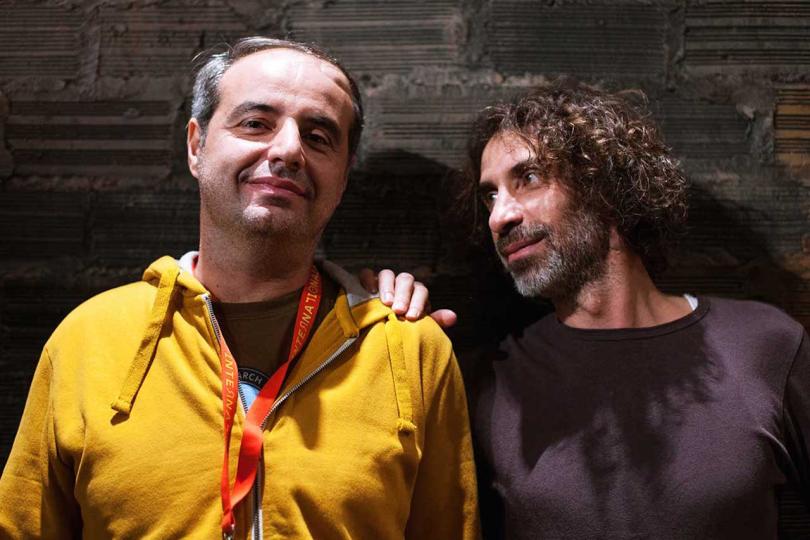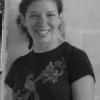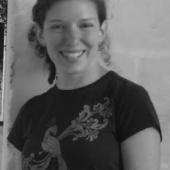Out There on a Cloud

When Yasser Mroué was seventeen years old, on the day his communist grandfather Hussein was assassinated, he was shot in the head by a sniper. The resulting brain damage severely limited the use of Yasser’s right side and fundamentally changed his view of the world.
But the bullet that so radically altered the course of Mroué’s life was one of many shots fired during the Lebanese Civil War. In the context of decades of strife across the Middle East, it was a drop in the ocean, which makes Yasser’s story utterly banal. So when his brother Rabih proposed turning it into a performance piece, Yasser balked, worrying that it wouldn’t be interesting.
The fact that a sniper bullet could actually be boring for an audience is tragic, but Yasser’s concerns about that aspect of his story are probably justified for a different reason – the banality of violence might have been too big of an issue for the two artists to tackle in a satisfying way. Instead, Rabih makes his brother’s story interesting by focusing on the personal, inner life of a man whose experience of the world can be measured as “before” and “after” a single day in the late 1980s.
Reality v. representation
The turn inward is critical to the success of Riding on a Cloud, the resulting one-act performance, because more than just Yasser’s motor skills were affected by his injury. Most significantly, the bullet wound damaged his ability to distinguish reality from representation. A pen drawn on a white card or Yasser’s own face in a photograph no longer looked like recognizable objects – they were just agglomerations of colors on paper. Yasser also had to stop going to the theater, because he couldn’t tell the difference between the actors and the characters they portrayed.
Riding on a Cloud turns this altered perception into a beautiful piece of art. Yasser plays himself, but not entirely, since Rabih used only a few of Yasser’s genuine documents in the creation of the play. The rest were found or fabricated, creating a kaleidoscopic impression of the factual and fictional Yasser(s).
The real, physical Yasser spends most of the play behind a desk, making his way deliberately through a stack of cassette tapes and DVDs. Sometimes he records his voice and plays it back. Other times, the cassette audio and DVD audio might overlap slightly, or the cassette might seem to be unrelated to the DVD altogether.
This disconnect between images and recorded text is magnified even further by the fact that the play is in Arabic with English subtitles. For non-Arabic-speaking audiences, there are often three narratives going on at once: the film pieces, the sound of Yasser’s voice reciting poetry or singing, and the English translation. It is an occasionally strenuous endeavor, but never overwhelming, and the shifting rhythms of the play create a rewarding sense of flow.
When is cliche not cliche?
Describing a performance as having a shifting, fragmentary narrative feels to me like a hallmark of the kind of pretentious performance art that makes me run for the hills. In fact, as I think through the many different pieces presented by the film and audio clips, there were a number of them that might feel too literal or heavy-handed out of context. For instance, one video projection displayed a medical report, in close-up, where the letters were torn in half and didn’t entirely line up. There was also a moment where the projections turned to static – the ultimate cliché, right?
Except that none of these moments felt cliché to me as I watched the show. One of the great strengths of Riding on a Cloud was in the fact that despite the seeming randomness of the various forms of media, all of the Mroués’ artistic choices feel not only intentional, but also comprehensible. They flow one to another with their own sort of internal logic. The clips of static, for instance, aren’t there to obfuscate the show’s message, but rather to illustrate its protagonist’s mental state at a very particular moment.
There is also a gentleness to Riding on a Cloud that I appreciated, particularly in light of the play’s violent context. One moment that particularly stuck with me was hearing Yasser recite part of the “To be or not to be” soliloquy in his Arabic-accented English – a simple gesture that gave new resonance to an all-too-familiar part of the Anglophone theatrical canon.
Rohan Preston’s Star Tribune review characterizees Riding on a Cloud as an investigative piece reminiscent of a procedural, and I see his point in that there are bits of “evidence” involved (photographs of the neighborhood where Yasser was shot, an old report card, bits of dialogue between Yasser and Rabih that read like a phone transcript). But the target of the investigation, if we can call it that at all, is the construction and representation of a self, or of multiple selves, through an assemblage of cracked lenses. The experience of the watching the play is less about solving a mystery than about seeing the poetry in it.
Riding on a Cloud has finished its run as part of the Walker Art Center’s Out There series, but you can get a short taste of it on YouTube.




